
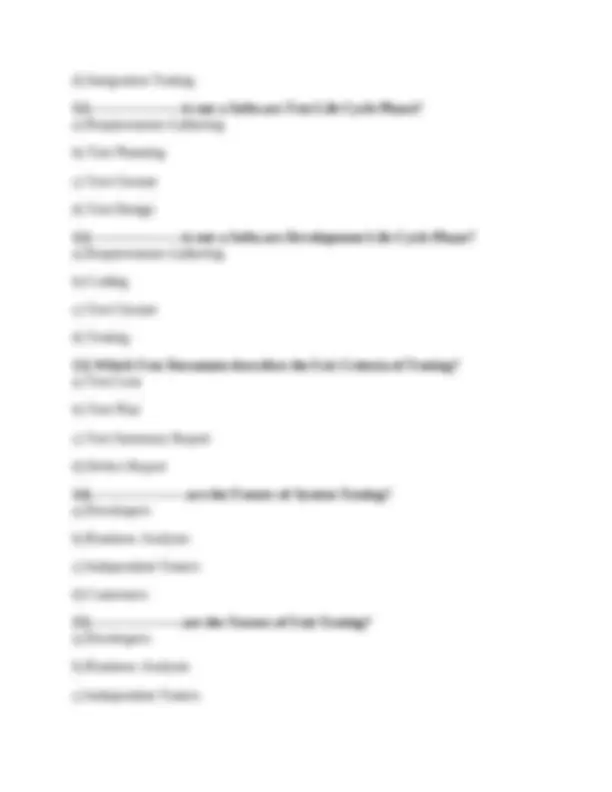
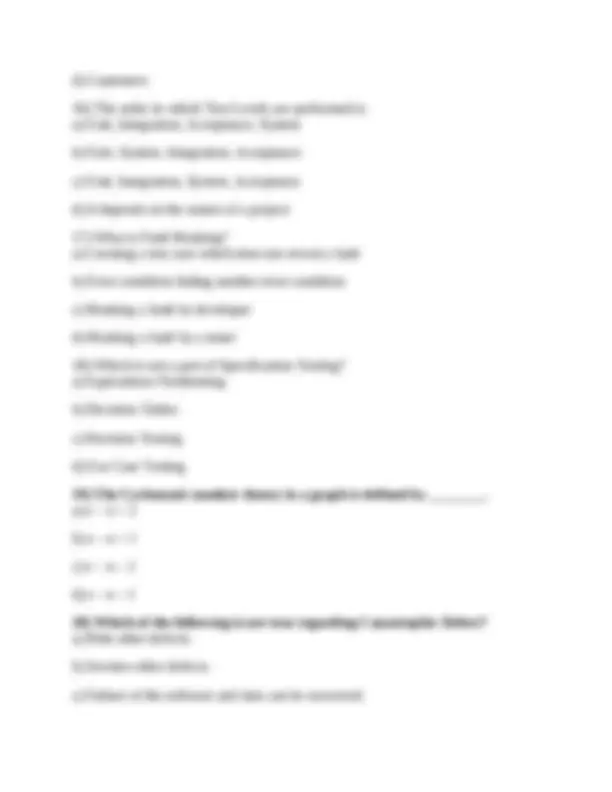
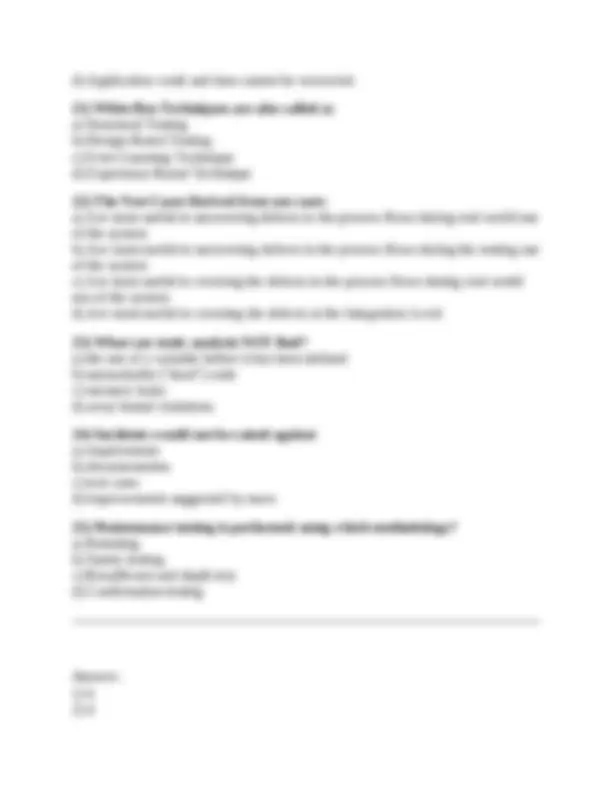
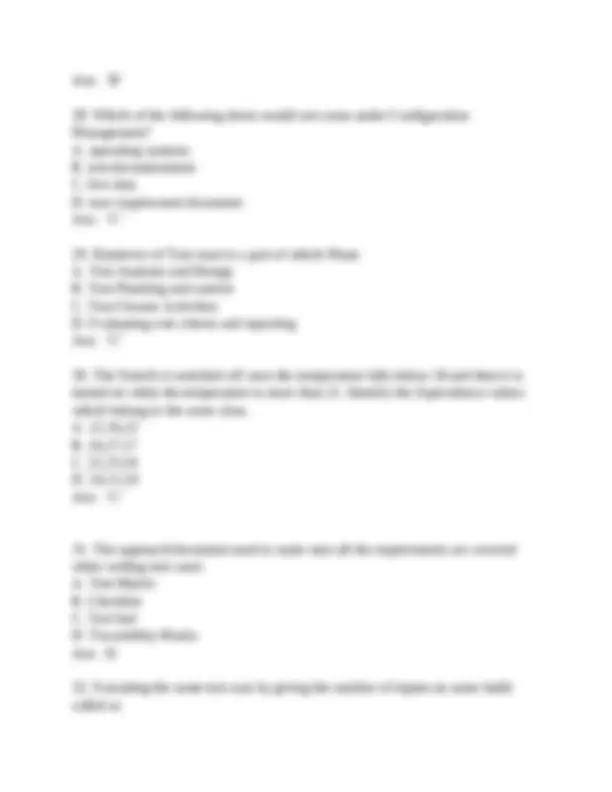
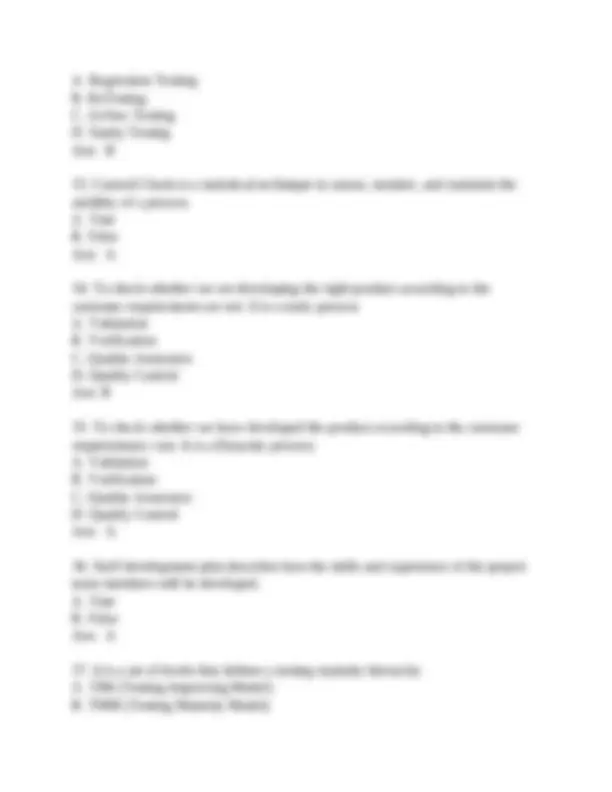
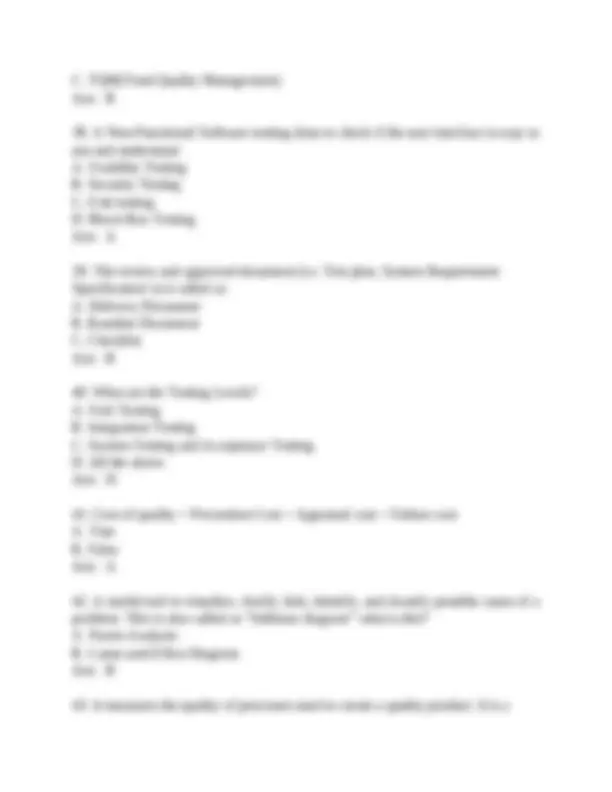

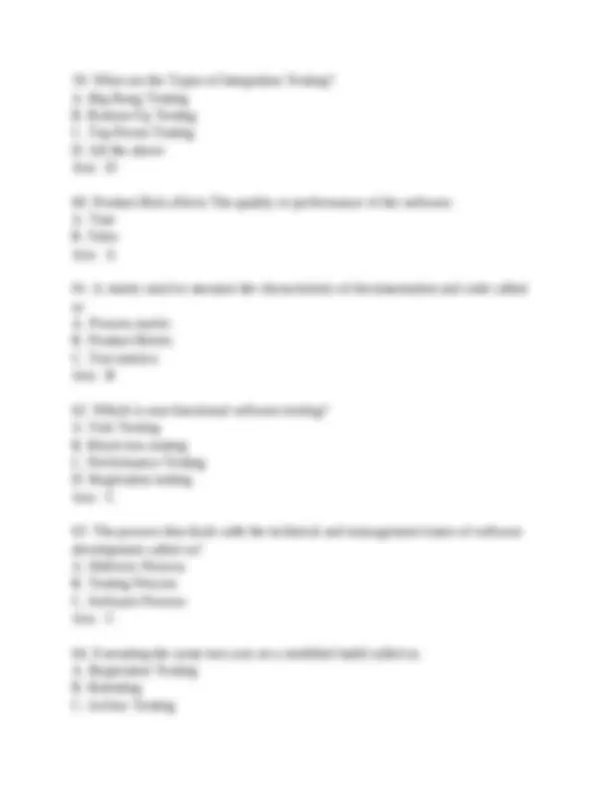

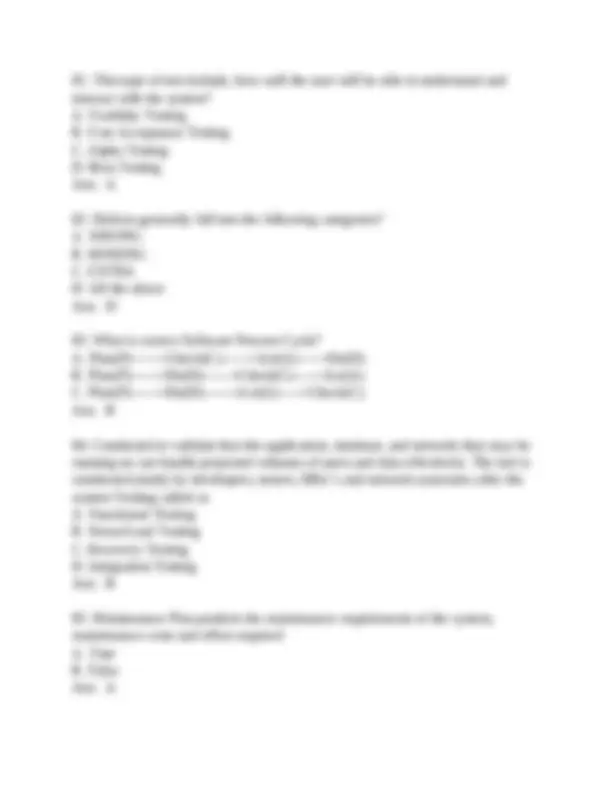
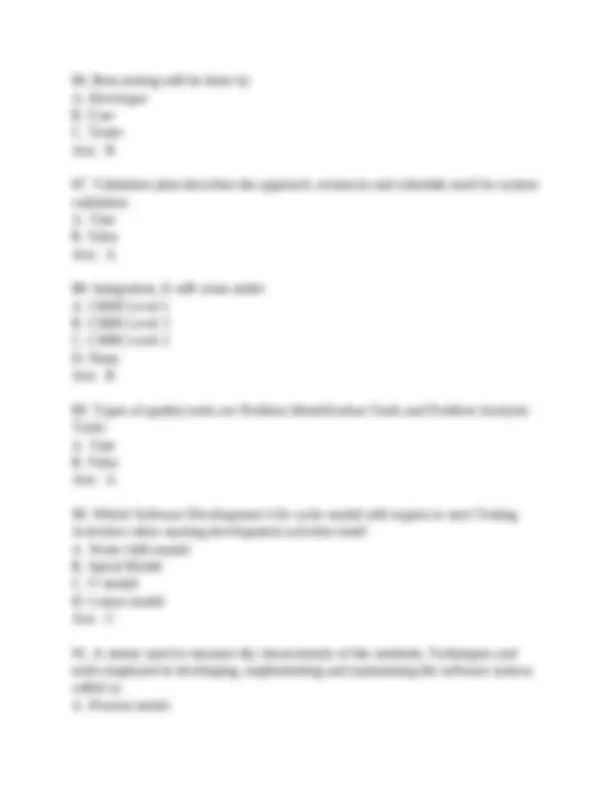
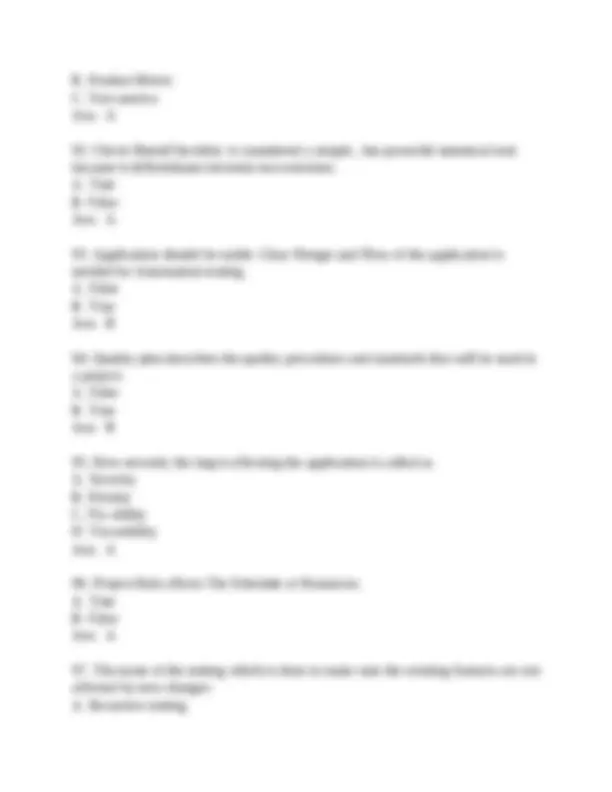
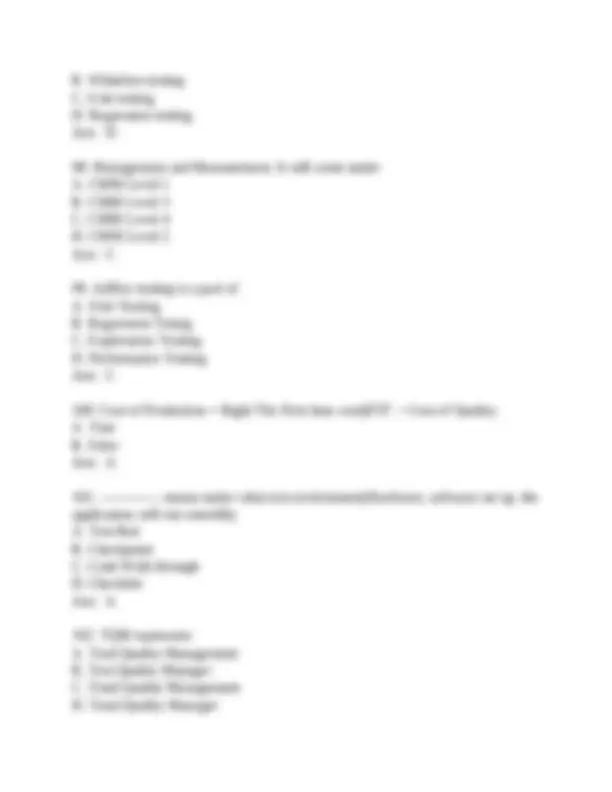
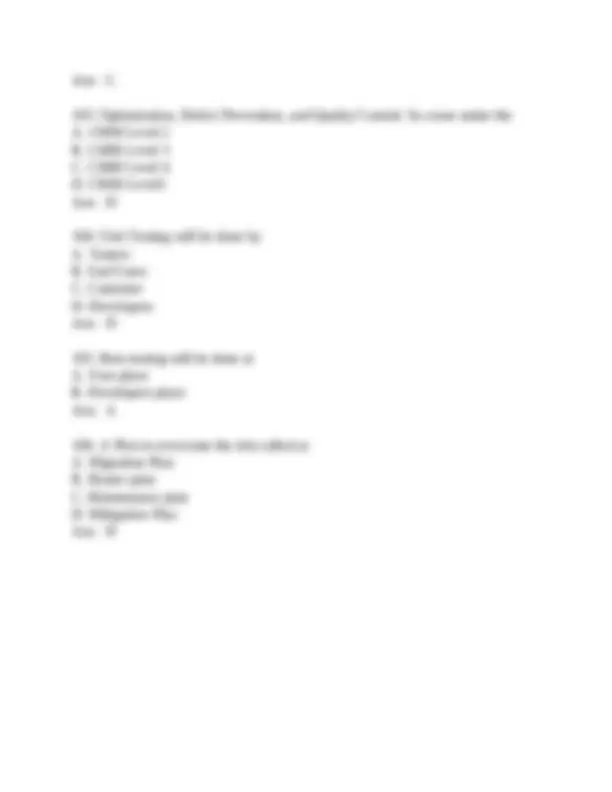


Study with the several resources on Docsity

Earn points by helping other students or get them with a premium plan


Prepare for your exams
Study with the several resources on Docsity

Earn points to download
Earn points by helping other students or get them with a premium plan
Community
Ask the community for help and clear up your study doubts
Discover the best universities in your country according to Docsity users
Free resources
Download our free guides on studying techniques, anxiety management strategies, and thesis advice from Docsity tutors
system progrsystem programming multiple choice question for unit 1 unit 2 unit 3
Typology: Quizzes
1 / 22

This page cannot be seen from the preview
Don't miss anything!















d) Experience based Test Design Technique 6) What is Exploratory Testing? a) Black Box Test Design Technique b) White Box Test Design Technique c) Gray Box Test Design Technique d) Experience based Test Design Technique 7) What is Sanity Testing? a) Test Level b) Test Type c) Test Design Technique d) Test Execution Level 8) ————is not a Test Document? a) Test Policy b) Test Case c) PIN (Project Initiation Note) d) RTM (Requirements Traceability Matrix) 9) —————–is not a Test Type? a) Database Testing b) Security Testing c) Functional Testing d) Statement Testing 10) ——————is not a Test Level? a) System Testing b) Acceptance Testing c) Functional Testing
d) Customers
d) Application crash and data cannot be recovered. 21) White Box Techniques are also called as a) Structural Testing b) Design-Based Testing c) Error Guessing Technique d) Experience-Based Technique 22) The Test Cases Derived from use cases a) Are most useful in uncovering defects in the process flows during real-world use of the system b) Are most useful in uncovering defects in the process flows during the testing use of the system c) Are most useful in covering the defects in the process flows during real-world use of the system d) Are most useful in covering the defects at the Integration Level 23) What can static analysis NOT find? a) the use of a variable before it has been defined b) unreachable (“dead”) code c) memory leaks d) array bound violations 24) Incidents would not be raised against a) requirements b) documentation c) test cases d) improvements suggested by users 25) Maintenance testing is performed using which methodology? a) Retesting b) Sanity testing c) Breadth test and depth test d) Confirmation testing Answers:
Ans: ‘A’
Ans: ‘B’
C. TQM(Total Quality Management) Ans: B
system of management activities, It is a preventive process, It applies for entire life cycle & Deals with Process. A. Validation B. Verification C. Quality Assurance D. Quality Control Ans: C
Ans: B
Ans: B
B. Product Metric C. Test metrics Ans: A